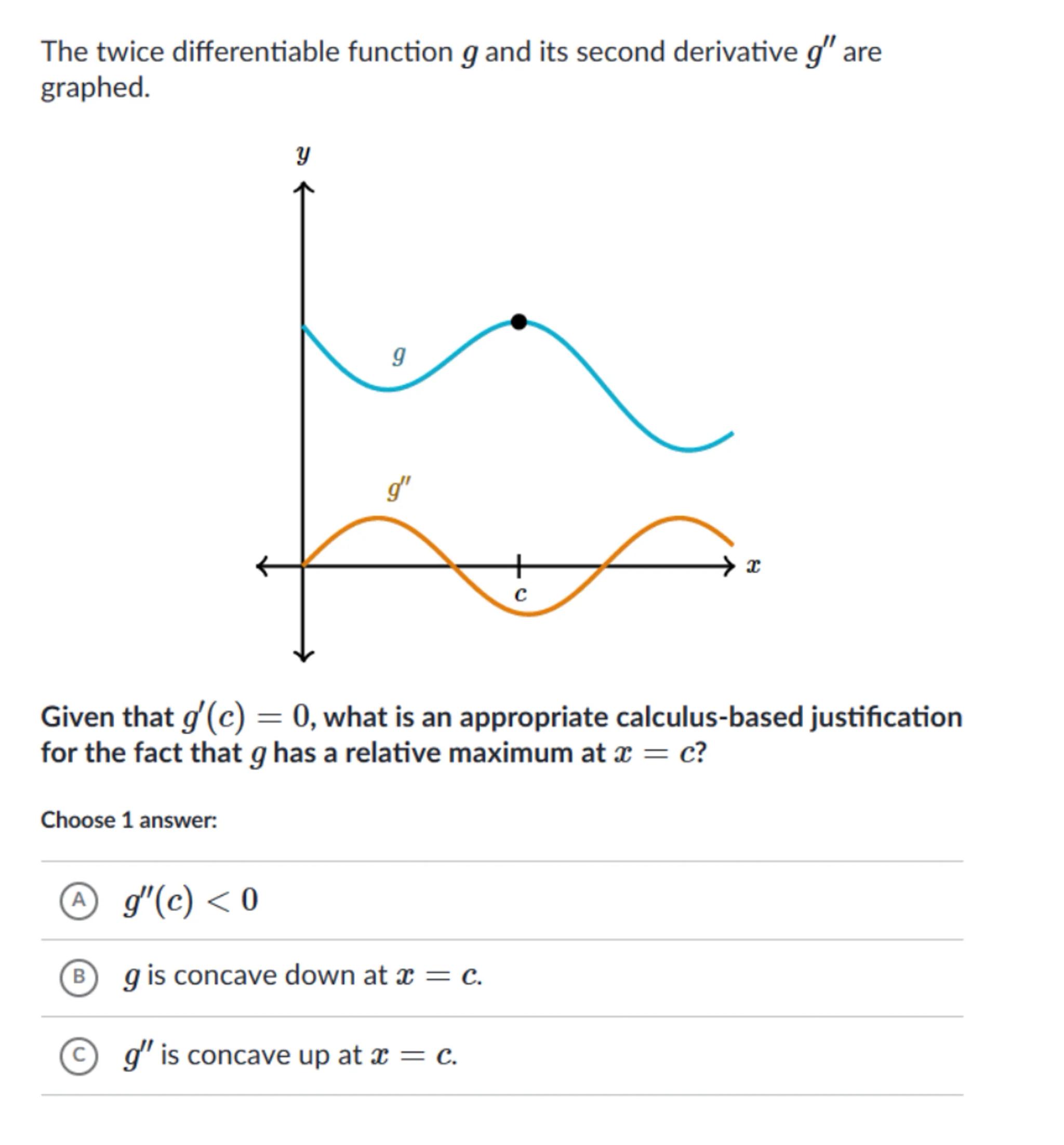
Sia

Question
Math
Posted 9 months ago
The twice differentiable function and its second derivative are graphed.
Given that , what is an appropriate calculus-based justification for the fact that has a relative maximum at ?
Choose 1 answer:
(A)
(B) is concave down at .
(C) is concave up at .

Answer from Sia
Posted 9 months ago
Solution by Steps
step 2
The second derivative test states that if , then has a relative maximum at
step 3
From the image, is below the x-axis to the right of , indicating
step 4
Therefore, has a relative maximum at because
A
Key Concept
Second Derivative Test
Explanation
The second derivative test helps determine the concavity of a function at a critical point. If , the function is concave down at , indicating a relative maximum.
Not the question you are looking for? Ask here!
Enter question by text
Enter question by image
Unlock Smarter Learning with AskSia Super!
Join Super, our all-in-one AI solution that can greatly improve your learning efficiency.
30% higher accuracy than GPT-4o
Entire learning journey support
The most student-friendly features
Study Other Question